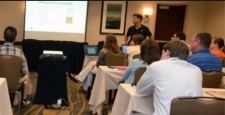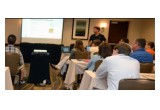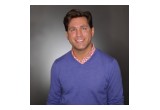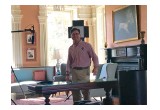
Newport, New Hampshire, July 11, 2017 (Newswire.com) - Dr. Mark Christensen, NH, knows that all educational establishments, private or public, have to face the challenge of finding the donors and alumni who have the means, the interest, and the willingness to contribute to the growth of the college or university. The next step would be to communicate with those people so that they will be convinced to provide financial support. The way to do this right is through good data insight. The use of advanced analytics can allow you to differentiate the good donor prospects from those who will hardly be worth your time.
The Problem with Major Gift Programs
The major hurdle for all educational institutions, regardless of size, with regards to major gift programs is that they have a database that is much too large for them to focus on. This is really not surprising because many donors, even regular ones, will not become major gift donors. What is needed is a way to trim down that database to a much smaller one, which contains the top prospects that gift officers can focus on.
How to Solve the Problem
The usual solution for this problem is wealth screening. However, this approach requires too much time, particularly because the data needs a lot of hands-on validation. Furthermore, this usually does not indicate wealth and assets for the whole database.
A better approach is available through predictive modeling, which is a statistical method that helps to predict who will do a certain thing in the future by considering similar actions in the past. In finding top prospects for major donors to educational institutions, the method works by looking at behavioral patterns, identifying who have been major donors historically, and then predicting who will likely be major gift donors in the future.
It works much better because it is a statistically accurate and very fast way to segment the whole database, enabling educational establishments to focus on a much smaller group of prospects that are likely to become major donors. With predictive modeling, schools can see who have the capability to give and who among them are likely to make a donation.
Segmentation Goals May Not Always Be Met
Sometimes, segmentation goals aren't met through predictive modeling. After narrowing down the database, what is left may still be too large. Nevertheless, having a list that needs to be cut down is much better than having to struggle with a gigantic list where it is very difficult, if not impossible, to identify top prospects.
Because we have big data available to us, we should use it to our advantage. Many things can be done with this, such as:
- Looking at who made donations in the past
- Looking at who made the largest donations
- Looking at who made the most donations historically
However, Dr. Mark Christensen of New Hampshire states that one should not depend only on the past giving as a way to identify donor prospects because many donors will not usually present themselves as such and begin donating major gifts until they have been properly convinced by the gift officers and the school has taken the necessary steps to nurture a good relationship with them. Looking only at past giving will cause the organization to miss out on non-donors and smaller donors who have the potential to donate major gifts.
“A great way to avoid missing out on such potential donors is to use wealth segmentation in combination with predictive modeling. What makes this effective is that wealth segmentation tools will focus on a slightly different subset than predictive models,” says Mark Christensen, NH.
Some Tips
Educational establishments have to become more data driven, and they must use this data in the strategic decision-making process. The problem is that it is a common tendency to overanalyze and overthink decisions. No matter how much you analyze the data, it doesn't bring in the dollar, nor does it work by just sitting there. Those who are tasked with obtaining donations and gifts to grow the institution, such as Planned Gift Officers, Directors of Development, and Major Gift Officers, will still need to call prospects and do a good job of convincing them to contribute to the growth of the college or university.
The science and art of fundraising for the college or university will need to meet somewhere. The science of data analytics is used to predict and identify those who are likely to have the means and the willingness to give, but action must be taken by gift officers and others like them to complete the process of finding the donors who will provide the financial support that is needed for the school to grow.
Dr. Mark Christensen, NH, has worked in education in various roles throughout his career from classroom teacher to the school administrator to marketing communications. He holds his Ed.D. in Curriculum & Technology from Plymouth State University/Argosy
Source: Mark Christensen
Share:



